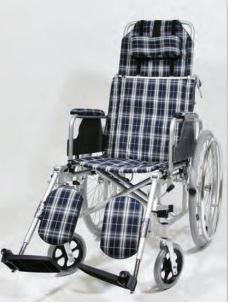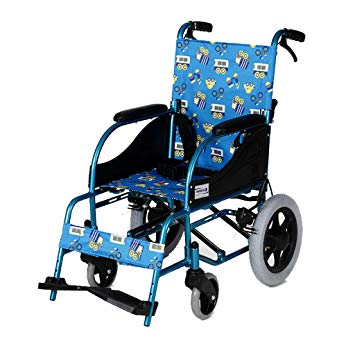WHEELCHAIR, collapsible, reclining footrest
STD
EPHYWHEC2--
Valid Article
Account code:
60100
HS Code:
901890
Last Updated on:
17/01/2025, 22:35:15
Former
Code(s):
EPHYZFR0067
Y122103 - Push wheelchairs
European Medical Device Nomenclature (EMDN) is the nomenclature of use by manufacturers when registering their medical devices in the EUDAMED database. EMDN is characterised by its alphanumeric structure that is established in a seven-level hierarchical tree.
In Europe, medical material that fulfills the definition of a medical device according to the MDR (Medical Device Regulation) is classified into 4 classes
WHEELCHAIR, collapsible, footrest
Definition
A wheeled personal mobility device designed for transporting persons generally limited to indoor use or use outdoors over smooth paved surfaces. It incorporates a simple seat-support system for a person without the full capacity to walk.
It also includes foot / leg rests to keep the occupant's feet raised from the ground.
It may be disassembled or folded for transport.
Specifications
Quality standards
ISO 7176, 2014, Wheelchairs
Quality Standards Comment
- Part 1: Determination of static stability
- Part 3: Determination of effectiveness of brakes
- Part 5: Determination of dimensions, mass and manoeuvring space
- Part 7: Measurement of seating and wheel dimensions
- Part 8: Requirements and test methods for static, impact and fatigue strengths
- Part 11: Test dummies
- Part 15: Requirements for information disclosure, documentation and labelling
- Part 16: Resistance to ignition of upholstered parts. Requirements and test methods
- Part 22: Set-up procedures
- Part 26: Vocabulary
- Part 30: Wheelchairs for changing occupant posture. Test methods and requirements
Technical specifications
- Wheelchair with 4 wheels and posterior handles
- Foldable
- Declinable foot and leg rest adjustable in length and height
- Removable armrests
- Static brakes system to immobilize the chair
- With rocker lever
Size (width) of the seat
- equal to the hip width of the patient + 2 cm.
- adult standards size: 42 cm is a common size to have in the wards/emergency rooms for a non-dedicated use.
Instructions for use
To be used by patients with reduced mobility.
The wheelchair is usually pushed by the caretakers or health staff or self-propelled (no need for hand rims on the big wheels).
Particularly indicated for patients with no possibility of knee flexion.
MSF requirements
Mobility aid used in all types of contexts.
Some restricted information has been hidden. Sign in
to see this information





![[KMEDMHWE36-] (mod ward) PHYSIOTHERAPY, traumatology, 50 persons 2021](/web/image/product.template/574568/image_256/%5BKMEDMHWE36-%5D%20%28mod%20ward%29%20PHYSIOTHERAPY%2C%20traumatology%2C%2050%20persons%202021?unique=24f22d5)
![[EPHYWHEC001] WHEELCHAIR CUSHION, memory foam, anatomical, 42x42x8cm](/web/image/product.template/573244/image_256/%5BEPHYWHEC001%5D%20WHEELCHAIR%20CUSHION%2C%20memory%20foam%2C%20anatomical%2C%2042x42x8cm?unique=ad6552d)